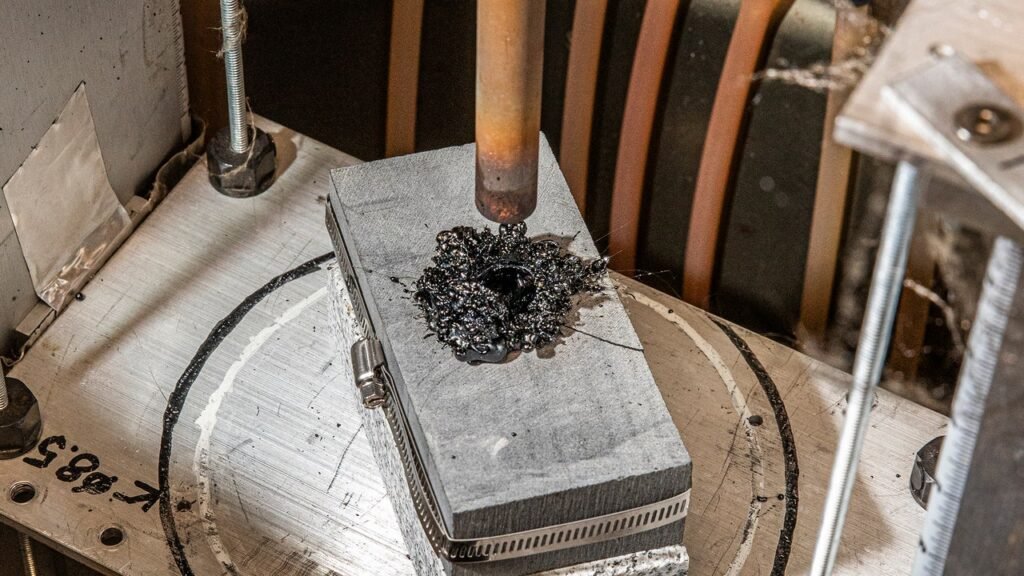Geothermal Energy Is a Local weather Moon Shot Beneath Our Ft

North Milford Valley, in western Utah, is house to dormant volcanoes, subterranean lava deposits, and smatterings of obsidian—black volcanic glass—that Paiute peoples as soon as collected for arrowheads and jewellery. Scalding groundwater nonetheless bubbles to the floor in locations. In such a panorama, you do not forget that the planet’s exhausting exterior, the place we spend our total lives, is so skinny that we name it a crust. Its superheated inside, in the meantime, burns with an estimated forty-four trillion watts of energy. Milford was as soon as a lead-, silver-, and gold-mining city, however after I visited the world on a sunny spring morning a scientist named Joseph Moore was prospecting for one thing else: warmth.
Warmth mined from underground is named geothermal—“earth warmth,” in historical Greek—and can be utilized to supply steam, spin a turbine, and generate electrical energy. Till just lately, people have tended to reap small portions within the uncommon locations the place it surfaces, akin to sizzling springs. Moore’s mission, as a geologist on the College of Utah and the challenge chief of the Frontier Observatory for Analysis in Geothermal Power (FORGE), is to “develop the roadmap that’s wanted to construct geothermal reservoirs anyplace on this planet.” This street is lengthy, and far of the map stays clean. The most important drawback is drilling miles by way of sizzling rock, safely. If scientists can do this, nevertheless, next-generation geothermal energy may provide clear vitality for eons.
Throughout my journey, Moore’s corps of consultants and roughnecks have been drilling the fifth borehole of their experimental challenge. Their rig, armed with a diamond drill bit, towered like a rocket over the agricultural panorama; miles of photo voltaic panels and wind generators receded into the space. The opening, which might ultimately be L-shaped, was 5 thousand toes deep, and the workforce had one other 5 thousand to go, horizontally. However, earlier than they might drill any farther, they wanted to put in a hundred-and-fifty-ton metal tube within the gap, utilizing particular heat-resistant cement to connect it into place. The tube was like a large straw that was meant to move sizzling water and steam from a man-made underground reservoir—with out contaminating native groundwater or triggering earthquakes.
At 6:15 P.M. on Could third, cement had began flowing into the opening. 4 hours later, a part of the cement folded in on itself. The subsequent morning, the cement provide ran out; the lads had miscalculated how a lot they wanted. This introduced the three-hundred-million-dollar operation to a maddening halt. Moore, in bluejeans and a FORGE-branded exhausting hat, referred to as his provider. The closest batch of appropriate cement was 5 hundred miles away, in Bakersfield, California. The truck wouldn’t arrive till after darkish.
Proper now, geothermal vitality meets lower than one per cent of humanity’s electrical energy and heating wants—a puny, nearly irrelevant portion. Fossil fuels energy about eighty per cent of human exercise, pumping out carbon dioxide and short-circuiting our local weather to catastrophic impact. Converts argue that geothermal checks three key packing containers: it’s carbon-free, obtainable all over the place, and successfully limitless. Crucially, it’s also baseload, which signifies that, in contrast to photo voltaic panels or wind, it supplies a relentless move of vitality. Firms and governments have taken discover. “During the last two years, I’ve watched this exponential spin-up of exercise in geothermal,” Tony Pink, a drilling knowledgeable in Houston, advised me, in 2023.
However there’s a obtrusive danger of moon photographs: typically, they miss. “There’s mainly zero probability that you simply’re going to develop a moon-shot expertise and have it’s business in 5 years, on a large-scale, worldwide,” Mark Jacobson, a Stanford engineering professor and the creator of “No Miracles Wanted: How At the moment’s Know-how Can Save Our Local weather and Clear Our Air,” advised me. That’s how lengthy humanity has to decrease emissions earlier than climatic devastation, based on his calculations. “There’s a really respectable probability you are able to do that with wind and photo voltaic,” he stated. Maybe, when sources and time are finite, making an attempt and failing—or just taking too lengthy—might be worse than not making an attempt in any respect.
In 1890, two brothers started drilling for decent water in Boise, Idaho; their firm quickly constructed the world’s first geothermal district heating system. In 1904, an Italian entrepreneur named Piero Conti constructed a geothermal turbine in Tuscany. It powered solely 5 mild bulbs, however Conti went on to construct Larderello 1, the first-ever geothermal plant and the ability supply for a railway and two close by villages. These early experiments illustrated one among geothermal’s key benefits: it may be used for each electrical energy and heating, which collectively account for round thirty-eight per cent of world local weather emissions.
Within the nineteen-sixties and seventies, Pacific Gasoline and Electrical, a California utility firm, constructed an industrial-scale geothermal electrical energy plant on the Geysers, a Yellowstone-esque assortment of pure steam vents in Northern California. It turned the biggest of its type, producing a 3rd of America’s geothermal output. Geothermal more and more appeared like a path to U.S. vitality independence, and business heavyweights akin to Chevron and Phillips opened vegetation. However issues quickly stacked up. Excessive temperatures prompted drilling tools to fail. Earnings proved paltry and funding scarce. “Every little thing was a problem, and there was by no means sufficient cash to resolve all these engineering issues,” Jeff Tester, a longtime geothermal researcher, advised me. Tester labored on a geothermal challenge at Los Alamos, which aimed to good directional drilling. “We have been by no means capable of do it as a result of the strategies within the subject have been too immature,” he stated.
Then, within the two-thousands, got here a fast enlargement in fracking, a drilling methodology that injects fluid into exhausting rock, creating fractures by way of which fossil fuels can move. A “shale revolution” unlocked large shops of oil and gasoline, inflicting small earthquakes, polluting groundwater, and spewing greenhouse gases alongside the way in which. A helpful aspect impact, nevertheless, was a Cambrian explosion of recent drilling practices—akin to horizontal drilling and magnetic sensing—that impressed a geothermal resurgence. In 2005, the Division of Power commissioned Tester, then a professor at M.I.T., to revisit the topic; his workforce’s report, “The Way forward for Geothermal Power,” calculated that simply two per cent of the warmth within the 4 miles under U.S. soil may meet the complete nation’s vitality wants—two thousand instances over. “That report was inspirational to lots of people, together with myself,” Mark McClure, the C.E.O. of an organization that gives software program and consulting to the oil, gasoline, and geothermal industries, advised me.
The subsequent era of geothermal-energy initiatives—together with FORGE, in Utah—was not about harvesting pure steam however, slightly, drilling to create steam. These initiatives, often known as enhanced geothermal methods, or E.G.S., usually flow into water between underground wells. Sizzling rock then turns it into superheated steam, which might spin generators and generate electrical energy.
Engineering such a system in exhausting, deep rock is a profound problem. Moore, the FORGE geologist, stated that wells have to be linked with a community of fractures within the rock, which he likened to cracks in a pane of glass. Consequently, a lot of his colleagues are former frackers. One among them, Paul Stroud, took me on a tour of the drilling rig; we walked thirty toes up a steep staircase to a walled-in management room often known as “the doghouse.” “That is an older rig,” he advised me, nearly apologetically. We may see sharp, snowy peaks within the distance. An array of pc screens displayed the drill bit’s depth, velocity, torque, and price of penetration. The lengthy listing of variables spoke to the complexity of carving horizontal wells in deep, sizzling expanses of granite.
The cement truck from Bakersfield arrived round 8:30 P.M. By ten-thirty, the lads have been pouring cement once more, gluing the big metallic straw in place. Subsequent, the workforce scanned the borehole with gamma rays. What drillers don’t wish to see are areas across the cement column. The scan confirmed no areas.
Effectively 16B(78)-32 was accomplished in July, 2023, not removed from one other properly that had been drilled earlier. It was greater than two miles lengthy. The day after its completion, engineers efficiently circulated fluid by way of synthetic fractures between the 2 wells. The lads have been ecstatic. “Connectivity is the entire objective,” Moore stated. “We achieved it.” However he was additionally eager about all of the steps that needed to comply with. No warmth had been mined but, no vitality produced. “We have to drill extra wells,” Moore advised me quickly afterward. “We have to get into hotter environments.”
Since then, many of those strategies have been confirmed. In the summertime of 2023, Fervo, an E.G.S. startup, set a file for steady move price between a number of wells. They broke it once more final 12 months. “It’s a very massive deal,” McClure advised me. The agency quickly began constructing a four-hundred-megawatt business energy plant close to the FORGE web site, gleaning a lot of its technical know-how from Moore’s workforce. In 2026, Fervo intends to begin offering around-the-clock energy to utilities in Southern California. Tech corporations akin to Google, Meta, and Microsoft have included geothermal energy into notoriously energy-hungry A.I. information facilities. And Eavor Applied sciences, a Canadian firm working in southern Germany, is growing a business E.G.S. challenge that would supply warmth and electrical energy to tens of hundreds of houses. Moore is extra bullish on geothermal than ever; in October, the D.O.E. awarded FORGE one other eighty million {dollars} to proceed its analysis into 2028. “I encourage this in each approach doable,” he stated. “We have to proceed.”
A small variety of engineers hope to progress past enhanced geothermal to “deep geothermal,” which might attain depths of six to 12 miles and temperatures in extra of eight hundred levels Celsius. (That is about as sizzling because the tip of a candle flame.) Believers view deep geothermal as a local weather savior; skeptics view it as a technically infeasible pipe dream. “I’m nonetheless on the unfavorable aspect of ‘Will this work in actuality?’ ” Philip Ball, a geothermal marketing consultant, advised me. Moore referred to as the thought “bullshit.”
On a pleasing spring morning in 2023, I visited a deep-geothermal lab in Houston, a metropolis that oil constructed. I plugged in my rental, a Chevy Bolt, close to a warehouse operated by Quaise, a startup with fifty-five staff that started in Cambridge, Massachusetts. From the car parking zone, I may see a neighbor’s two white horses.
Carlos Araque, a bearded and smooth-talking engineer from Colombia who based Quaise, advised me that he left the oil business in 2017 to seek for a renewable vitality supply “with the actual potential to displace fossil fuels.” He predicted that by 2050 humanity’s vitality consumption may have doubled. “Wind and photo voltaic gained’t scale to the extent that’s required by the civilization we’ve constructed on fossil fuels,” he stated. “It’s physics.” A pound of oil comprises much more vitality than a one-pound rechargeable battery. He additionally claimed that photo voltaic and wind initiatives have run out of inexpensive land—one thing that Jacobson, the Stanford professor, deemed “incorrect.” (Jacobson estimates that renewables require about half a per cent of the Earth’s landmass to cowl humanity’s vitality consumption.)






